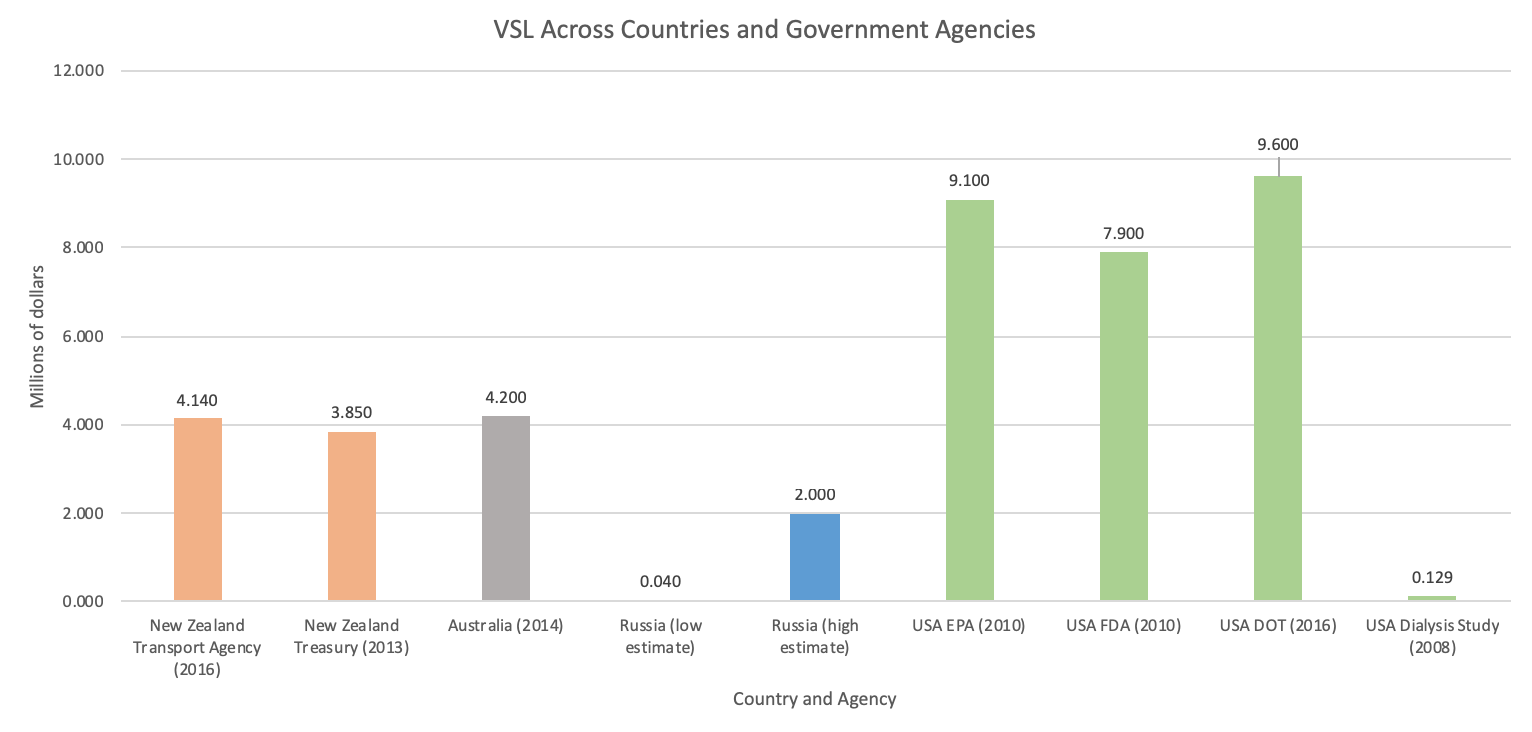Explore web search results related to this domain and discover relevant information.

While American Express doesn’t have a "5/24" rule like Chase does, the issuer does limit welcome offer eligibility based on your card history — nominally, you’re eligible for one welcome offer per credit card “per lifetime,” but it’s not necessarily as simple as that.
American Express restricts each card's welcome bonus so that it can only be earned by one per person, per lifetime. If you earn a bonus on a card once, you can't cancel it, re-apply and then earn that bonus again.An easy way to tell which cards are affected by the once-per-lifetime rule is to check the terms and conditions for the following language: “Welcome offer not available to applicants who have or have had this Card or previous versions.” Sometimes there are variations of this language and additional restrictions, depending on the number of American Express cards you’ve opened and closed.Occasionally, you’ll find that the terms on certain offers do not contain once-per-lifetime language. I recently received an offer to upgrade and — when I accessed the card terms — there is no language restricting my ability to earn the welcome bonus.AmEx’s once-per-lifetime rule on welcome bonus offers is restrictive, but still workable. The fact that American Express keeps track and seems to notify applicants when they’re ineligible before an application is submitted is certainly helpful.

Average life insurance rates vary by age, health and policy type. For a 20-year term policy with $500,000 coverage, the average cost is $53 per month.
For $500,000 coverage, average monthly rates are $53 for 20-year term, $69 for no-exam, $667 for whole life and $294 for universal life insurance. Permanent life insurance costs more than term life insurance because permanent policies provide lifelong financial protection with guaranteed death benefits and cash value accumulation, while term policies offer temporary coverage.Ensure you are getting the best rate for your life insurance. Compare quotes from the top insurance companies. ... Depending on whether you choose term or permanent life insurance, your rates can vary widely because of different policy features and coverage durations.Whole life policies cost more than term life due to permanent coverage, cash value accumulation, guaranteed benefits with fixed premiums, and potential dividends, making them more expensive than temporary term protection.Higher life insurance policy amounts tend to come with higher premiums. Longer terms can increase costs by extending the period during which the insurer is at risk.
In social and political sciences, it is the marginal cost of death prevention in a certain class of circumstances. In many studies the value also includes the quality of life, the expected life time remaining, as well as the earning potential of a given person especially for an after-the-fact ...
In social and political sciences, it is the marginal cost of death prevention in a certain class of circumstances. In many studies the value also includes the quality of life, the expected life time remaining, as well as the earning potential of a given person especially for an after-the-fact payment in a wrongful death claim lawsuit.The VSL is very different from the value of an actual life. It is the value placed on changes in the likelihood of death, not the price someone would pay to avoid certain death. This is best explained by way of an example. From the EPA's website: Suppose each person in a sample of 100,000 people were asked how much he or she would be willing to pay for a reduction in their individual risk of dying by 1 in 100,000, or 0.001%, over the next year.Since this reduction in risk would mean that we would expect one fewer death among the sample of 100,000 people over the next year on average, this is sometimes described as "one statistical life saved.” Now suppose that the average response to this hypothetical question was $100. Then the total dollar amount that the group would be willing to pay to save one statistical life in a year would be $100 per person × 100,000 people, or $10 million.Value of life estimates are frequently used to estimate the benefits added due to a new policy or act passed by the government. One example is the 6-year retroactive study on the benefits and costs of the 1970 Clean Air Act in the period from 1970 to 1990. This study was commissioned by the U.S.On conducting the benefit-cost analysis, the team measured each dollar value of an environmental benefit by estimating a how many dollars a person is willing to pay in order to decrease or eliminate a current threat to their health, otherwise known as their "willingness-to-pay" (WTP). The WTP of the U.S. population was estimated and summed for separate categories including mortality, chronic bronchitis, hypertension, IQ changes, and strokes. Thus, the individual WTPs were added to get the value of a statistical life (VSL) for each category considered in the valuation of the act's benefits.

For this table, the period life expectancy at a given age is the average remaining number of years expected prior to death for a person at that exact age, born on January 1, using the mortality rates for 2022 over the course of his or her remaining life.
For this table, the period life expectancy at a given age is the average remaining number of years expected prior to death for a person at that exact age, born on January 1, using the mortality rates for 2022 over the course of his or her remaining life.This life table is available for certain other years. Period Life Table, 2022, as used in the 2025 Trustees ReportActuarial Life Table

From 1900 to 1930, life expectancy rose by about five and a half months for each new generation. A person born in a wealthy country in 1900 could expect to live to 62 on average, but by 1938 average life expectancy had surged to 80 years.
Researchers warned that these forecasts should be taken with a grain of salt, given that an unexpected pandemic, medical breakthrough, or societal or economic upheaval could influence life expectancy in unpredictable ways. However, these projections might help people make personal decisions about saving, retirement and long-term planning, researchers said.The U.S. Centers for Disease Control and Prevention has more on life expectancy. SOURCE: University of Wisconsin-Madison, news release, Aug. 27, 2025 · People shouldn’t expect to see folks live 100 years on average in the near future. Originally published on healthday.com, part of the BLOX Digital Content Exchange. ... Keep it Clean. Please avoid obscene, vulgar, lewd, racist or sexually-oriented language. PLEASE TURN OFF YOUR CAPS LOCK. Don't Threaten. Threats of harming another person will not be tolerated.Be Truthful. Don't knowingly lie about anyone or anything. Be Nice. No racism, sexism or any sort of -ism that is degrading to another person. Be Proactive. Use the 'Report' link on each comment to let us know of abusive posts. Share with Us.You have permission to edit this article.
Sign up now to get your own personalized timeline!
Click to Follow life_per · Per Life · @life_per · SAM,L.C,Brain'sOrganz,23FRS,凜太朗,BCST,酒部弘樹,LesWell K · youtube.com/channel/UC9L9C…Joined November 2019 · 10 Following · 1,610 Followers · @life_per hasn’t posted · When they do, their posts will show up here.


The data reveals that life expectancy at age 65 in the US has reached 19.5 years, meaning individuals who reach retirement age can expect to live well into their 80s. This represents a 0.6-year increase from 2022, highlighting improved healthcare outcomes for elderly Americans. The 6.0% decrease in age-adjusted death rates across the population underscores the effectiveness of medical interventions and public health measures implemented following the pandemic period...
Males experienced a 1.0-year increase in life expectancy from 2022 to 2023, slightly outpacing the 0.9-year increase observed among females. This convergence trend suggests that targeted health interventions addressing male-specific mortality risks, including cardiovascular disease prevention and mental health support, are yielding positive results. The persistent but decreasing gender gap in life expectancy reflects ongoing societal changes in lifestyle patterns, healthcare utilization, and occupational hazards.The consistent reductions across multiple leading causes demonstrate comprehensive improvements in the American healthcare system’s ability to prevent and treat major life-threatening conditions, directly contributing to extended life expectancy across all age groups in the US 2025. Infant mortality rates in the US 2025 have remained relatively stable, with the overall rate showing no significant change from 2022 to 2023. However, this stability represents a positive outcome given the substantial improvements in adult mortality rates during the same period.This education-based longevity gap reflects complex interactions between income levels, health literacy, occupational hazards, and lifestyle choices. State-level variations can reach up to 6 years difference between the highest and lowest-performing states, indicating that local health policies, healthcare infrastructure, and population health initiatives significantly impact regional life expectancy outcomes in 2025.Life Expectancy by Age in the US 2025 The United States has witnessed remarkable improvements in life expectancy by age in the US 2025, reflecting enhanced healthcare systems, medical breakthroughs, and improved public health initiatives. According to the most recent…
Share your videos with friends, family, and the world


We analyse the cost per LYG results in relation with a commonly accepted Spanish cost-effectiveness threshold and the possible relation with the cost per quality adjusted life year (QALY) gained when they both were calculated for the same economic evaluation.
Objectives The objective of this study was to evaluate the methodological characteristics of cost-effectiveness evaluations carried out in Spain, since 1990, which include LYG as an outcome to measure the incremental cost-effectiveness ratio. Methods A systematic review of published studies was conducted describing their characteristics and methodological quality.A systematic review of published studies was conducted describing their characteristics and methodological quality. We analyse the cost per LYG results in relation with a commonly accepted Spanish cost-effectiveness threshold and the possible relation with the cost per quality adjusted life year (QALY) gained when they both were calculated for the same economic evaluation.Fernández de Bobadilla, J., Calvo, C., Gómez-Gerique, J.A., Lázaro, P., Méndez, I., García, M.: Cost per life year gained of atorvastatin 10 mg in hypertensive Spanish patients with moderate risk: economic evaluation of the ASCOT-LLA study with Spanish costs.Rodríguez Barrios, J.M., Pérez Alcántara, F., Crespo Palomo, C. et al. The use of cost per life year gained as a measurement of cost-effectiveness in Spain: a systematic review of recent publications. Eur J Health Econ 13, 723–740 (2012).
A measure of the state of health of a person or group in which the benefits, in terms of length of life, are adjusted to reflect the quality of life. One quality-adjusted life year (QALY) is equal to 1 year of life in perfect health. It combines two different benefits of treatment—length ...
A measure of the state of health of a person or group in which the benefits, in terms of length of life, are adjusted to reflect the quality of life. One quality-adjusted life year (QALY) is equal to 1 year of life in perfect health. It combines two different benefits of treatment—length of life and quality of life—into a single number that can be compared across different types of treatments.A year lived in a less than perfect state of health can also be expressed as the amount of value accrued to the person living it. For example, 1 year of life lived in a situation with utility 0.5 yields 0.5 QALYs—a person experiencing this state is getting only 50% of the possible value of that year.In the United Kingdom, the National Institute for Health and Care Excellence (NICE), which advises on the use of health technologies within the National Health Service, used "£ per QALY" to evaluate their utility since its founding in 1999. In 1989, the state of Oregon attempted to reform its Medicaid system by incorporating the QALY metric. This was found to be discriminatory, and in violation of the Americans with Disabilities Act in 1992. Louis W. Sullivan, the Secretary of Health and Human Services at the time, criticized the plan by stating that "Oregon's plan in substantial part values the life of a person with a disability less than the life of a person without a disability."Willingness to gain or lose life-years is constant over time. ECHOUTCOME also released "European Guidelines for Cost-Effectiveness Assessments of Health Technologies", which recommended not using QALYs in healthcare decision making. Instead, the guidelines recommended that cost-effectiveness analyses focus on "costs per relevant clinical outcome."


Looking at historical records, the team found that from 1900 to 1938, life expectancy was rising by about 5.5 months with each generation. For the 1939 to 2000 groups, the increase slowed to around 2.5 to 3.5 months per generation – a noticeable difference.
We also know there are myriad ways that lifespan is influenced on the individual level, from the exercise you get to how close you live to the coast. What this study shows is those influences working out on a much bigger scale – and perhaps pointing to areas where we need to prioritize further research or improve healthcare in order to keep us living longer, happier lives.With the drastic increase in life expectancy seen over the last century or so, it's natural to assume that eventually we'll all be regularly living to 100.Here's the takeaway: gains in life expectancy are already slowing down significantly, and that's going to continue for the foreseeable future.Life expectancy will still edge up, but only at a rate about half of what it's been previously.

A new study published in 'Nature Communications' suggests that no matter how healthy you stay, your body’s ability to recover from setbacks, what researchers call “physiological resilience”, declines over time, putting a limit on human life at around 120 years to 150 years, as per a Popular ...
A new study published in 'Nature Communications' suggests that no matter how healthy you stay, your body’s ability to recover from setbacks, what researchers call “physiological resilience”, declines over time, putting a limit on human life at around 120 years to 150 years, as per a Popular Mechanics report.They wrote, "We conclude that the criticality resulting in the end of life is an intrinsic biological property of an organism that is independent of stress factors and signifies a fundamental or absolute limit of human lifespan," as quoted in the report. ALSO READ: What happens to your uploaded photos on AI chatbots? Are they really private? The study used those two variables due to the following reasons. Blood cell counts served as a useful marker as they have well-known healthy ranges that vary by age and gender, as per Popular Mechanics.The study suggests there’s a biological limit we can’t surpass without artificial interventions like organ replacements or other procedures, as per the report. While 120 to 150 years may seem like a long stretch compared to today’s average life spans, it aligns closely with the longest recorded human lifespan, Jeanne Louise Calment, who lived to 122 years and 164 days, as per the Popular Mechanics report.Jeanne Calment, who lived to 122 years and 164 days, as per the Popular Mechanics report. ... how long can humans live naturallymaximum human lifespanhuman life expectancylongest recorded lifespanstep counts for seniorsHuman lifespan limitis immortality possiblehow to live longer naturallywhy does body stop recovering with agewhy do humans age and die

Today, annual crops account for more than 85% of the worldwide calorie consumption. Annual crops are sown and harvested within one growing season and therefore require annual tillage, and application of herbicides and fertilizers that cause land and water degradation. In...
Current attempts to breed perennial cereals are hindered by hybridisation barriers between annual crops and wild perennial relatives and the trade-off between longevity and seed yield.The EU-funded PERLIFE project will address this challenge by engineering perennial traits in annual crops, using barley as a model system.Annual crops are sown and harvested within one growing season and therefore require annual tillage, and application of herbicides and fertilizers that cause land and water degradation. In contrast, perennial crops grow over many seasons, require low agricultural input and thereby hold great potential for sustainable production systems and climate change adaptation.However, current efforts to breed perennial cereals are hindered by hybridization barriers between annual crops and wild perennial relatives and the trade-off between longevity and seed yield. PERLIFE pioneers the knowledge-based engineering of perennial traits in annual crops using the important annual crop barley as study system.PERLIFE capitalizes on 1) recent technical advances in high-throughput genome sequencing for the identification of genetic variants and 2) the novel genome-editing technology Crispr/CAS9 for the targeted transfer of genes between species. PERLIFE will isolate genetic variants promoting perennial growth using comparative genomics in annual and perennial wild relatives of barley.
This article introduces the concept of Healthy life expectancy (HALE), which denotes the average number of years a person is expected to live in "full health". There are challenges in comparing life expectancies across countries due to disparities in data reporting and collection standards.
From the start of the 21st century, estimates of healthy life expectancy (HALE), the average number of years that a person can expect to live in "full health", are also produced.This list of countries and territories by life expectancy provides a comprehensive list of countries alongside their respective life expectancy figures. The data is differentiated by sex, presenting life expectancies for males, females, and a combined average.This is especially true for healthy life expectancy, the definition of which may change over time, even within a country. For example, Canada is a country with a fairly high overall life expectancy at 81.63 years. This number decreases to 75.5 years for Indigenous people in Canada.The life expectancy is shown separately for males and for females, as well as a combined figure.


For someone born just 38 years later in similar conditions, life expectancy had jumped to 80 years on average. For those born between 1939 and 2000, the increase slowed to roughly two and a half to three and a half months per generation, depending on the forecasting method.
Citation: Longevity gains slowing with life expectancy of 100 unlikely, study finds (2025, August 30) retrieved 2 September 2025 from https://phys.org/news/2025-08-longevity-gains-life.html · This document is subject to copyright. Apart from any fair dealing for the purpose of private study or research, no part may be reproduced without the written permission.Although a population-level analysis, this research also has implications for individuals, as life expectancy influences personal decisions about saving, retirement and long-term planning.A new study co-authored by a University of Wisconsin-Madison professor finds that life expectancy gains made by high-income countries in the first half of the 20th century have slowed significantly, and that none of the generations born after 1939 will reach 100 years of age on average.Published in the journal Proceedings of the National Academy of Sciences, the study by Héctor Pifarré i Arolas of the La Follette School of Public Affairs, José Andrade of the Max Planck Institute for Demographic Research, and Carlo Giovanni Camarda of the Institut national d'études démographiques analyzed life expectancy for 23 high-income and low-mortality countries using data from the Human Mortality Database and six different mortality forecasting methods.
Cohort LEB is the mean length of life of a birth cohort (in this case, all individuals born in a given year) and can be computed only for cohorts born so long ago that all their members have died. Period LEB is the mean length of life of a hypothetical cohort assumed to be exposed, from birth ...
Cohort LEB is the mean length of life of a birth cohort (in this case, all individuals born in a given year) and can be computed only for cohorts born so long ago that all their members have died. Period LEB is the mean length of life of a hypothetical cohort assumed to be exposed, from birth through death, to the mortality rates observed at a given year.English life expectancy at birth averaged about 36 years in the 17th and 18th centuries, one of the highest levels in the world although infant and child mortality remained higher than in later periods. Life expectancy was under 25 years in the early Colony of Virginia, and in seventeenth-century New England, about 40% died before reaching adulthood.During the Industrial Revolution, the life expectancy of children increased dramatically. Recorded deaths among children under the age of 5 years fell in London from 74.5% of the recorded births in 1730–49 to 31.8% in 1810–29, though this overstates mortality and its fall because of net immigration (hence more dying in the metropolis than were born there) and incomplete registration (particularly of births, and especially in the earlier period).Men may be more vulnerable to cardiovascular disease than women, but this susceptibility was evident only after deaths from other causes, such as infections, started to decline. Most of the difference in life expectancy between the sexes is accounted for by differences in the rate of death by cardiovascular diseases among persons aged 50–70.For example, a genome-wide association study of 1 million lifespans found 12 genetic loci which influenced lifespan by modifying susceptibility to cardiovascular and smoking-related disease. The locus with the largest effect is APOE. Carriers of the APOE ε4 allele live approximately one year less than average (per copy of the ε4 allele), mainly due to increased risk of Alzheimer's disease.


The average cost of life insurance for a 20-year term policy starts at $20 per month. Whole life insurance rates are more expensive at $160 a month. Learn more.
The average cost of life insurance varies depending on the policy type, age, health, and more. A 20-year term life insurance policy may start as low as $20 per month, but rates are higher when buying permanent life insurance and for customers with health conditions.The average cost of life insurance is cheapest if you can get life insurance with a group plan through your employer. Term life and final expense insurance have the next lowest rates. Permanent policies, like universal and whole life, cost more but offer more flexibility, including investments.A million-dollar policy will be more expensive than a lower payout policy. A 20-year term life insurance policy that pays out a $500,000 benefit starts at $30 per month, so you can expect a million-dollar policy to be double that.For example, whole life insurance rates are significantly higher than those of term life insurance, but policies do not expire after a set period, unlike term life insurance.
Life expectancy has doubled over the last two centuries around the world. How has this happened? Period life expectancy is a metric that summarizes death rates across all age groups in one particular year.
Riley (2005)3 compiles life expectancy estimates from hundreds of historical sources and calculates the average of estimates that met an acceptable quality threshold, such as having estimates for entire nations or regions. Less historical data is available from the pre-health transition period in countries – this is especially the case for Africa, Asia, Oceania, and the former Soviet Union.These wide differences are also reflected within countries. Countries with a lower average life expectancy also tend to have wider variations in lifespans.7 · Period life expectancy is a metric that summarizes death rates across all age groups in one particular year.The Human Mortality Database prioritizes uniformity in methods and is limited to specific countries and periods where high-quality mortality data is available nationally. The UN WPP estimates life expectancy in various countries through various methods, using data on mortality rates.It’s often argued that life expectancy across the world has only increased because child mortality has fallen. But this is untrue. The data shows that life expectancy has increased at all ages. Period life expectancy is a metric that summarizes death rates across all age groups in one particular year.

Prior to the COVID-19 pandemic, global life expectancy has increased by more than 6 years between 2000 and 2019 – from 66.8 years in 2000 to 73.1 years in 2019. While healthy life expectancy (HALE) has also increased by 9% from 58.1 in 2000 to 63.5 in 2019, this was primarily due to declining ...
Prior to the COVID-19 pandemic, global life expectancy has increased by more than 6 years between 2000 and 2019 – from 66.8 years in 2000 to 73.1 years in 2019. While healthy life expectancy (HALE) has also increased by 9% from 58.1 in 2000 to 63.5 in 2019, this was primarily due to declining mortality rather than reduced years lived with disability.However, in just two years, the COVID-19 pandemic reversed about a decade of gains in both life expectancy at birth. By 2020, both global life expectancy and HALE had rolled back to 2016 levels (72.5 years and 62.8 years, respectively). The following year saw further declines, with both retreating to 2012 levels (71.4 years and 61.9 years, respectively).The estimates confirm the trend for longevity: lifespans are getting longer up to 2019.In other words, the increase in HALE (5.3 years) has not kept pace with the increase in life expectancy (6.4 years).
List of countries and dependencies in the world ranked by life expectancy at birth, both sexes, males and females. World Population Life Expectancy with historical chart
Life expectancy at birth. Data based on the latest United Nations Population Division estimates.See also: Countries in the world ranked by Life Expectancy





